Season's End
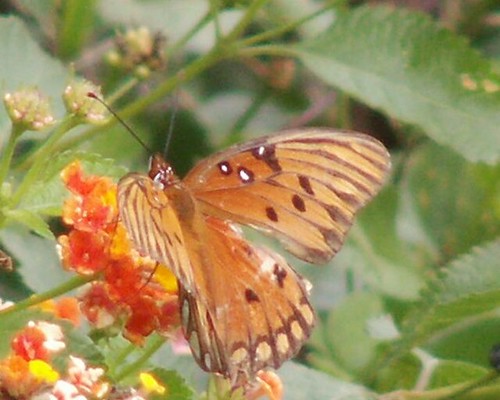
"It might have been knocked around by Hurricane Wilma," Mary said.
"Maybe," I conceded. But would Wilma have made the creature so faded? Was I looking at an elderly butterfly at the end of its season? The life span of an adult Gulf Fritillary is just one month....

It was joined among the lantanas by a younger-looking companion. I wondered if the two butterflies were keeping each other company, if they were related. Compared side-by-side, they certainly looked like a younger-elder pair. (Photos are as-is out of the camera except for cropping.)
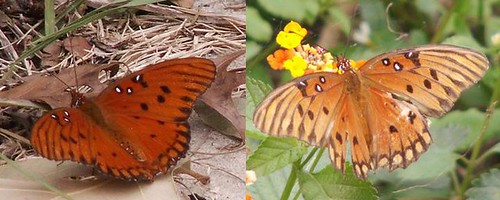
After photographing them I'd stood on line at the post office, behind a woman who had brought in a cardboard box almost half her size. She wore a housedress and cat's-eye glasses; her white hair was up in curlers. Too late to help her on the way in, I held the door open for her on the way out. She thanked me, told me her legs aren't what they used to be.
She is turning 89. The box holds presents for her great-grandchildren.
Pupae.
Closer to the post office I had found some lantanas nestled in among pine needles, backdropped by Spanish moss.
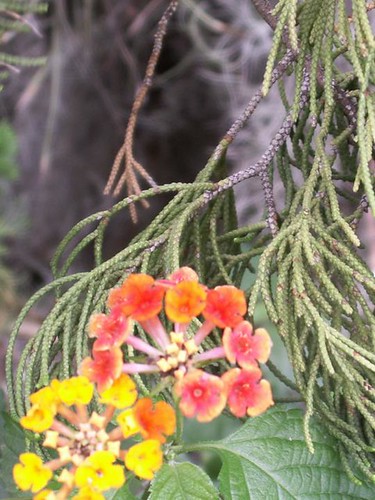
A couple of green pine cones had dropped, beside the ones that had turned brown and hard. In another universe this one would be a giant caterpillar, ready to spin a chrysalis the size of my forearm. The butterfly that emerged could block the sun out with its wings.
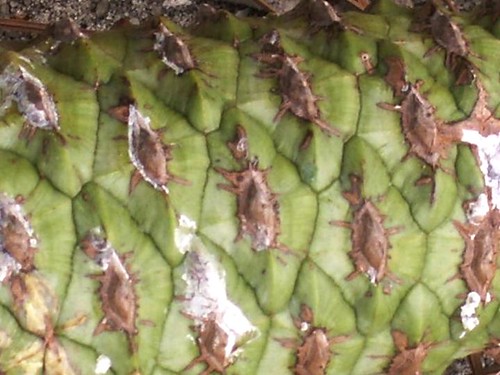
The wind had been brisk in what passes for a cold spell in Florida. Stands of goldenrod heaved, and on them dozens of particolored, polka-dotted "wasps" that are really Polkadot Wasp Moths. They were in none of my field guides, but a Web search finally turned them up. According to the University of Florida, "Some authorities classify the wasp moths as the family Ctenuchidae or Amatidae rather than as a subfamily of Arctiidae." This particular wasp moth is the adult stage of the oleander caterpillar.
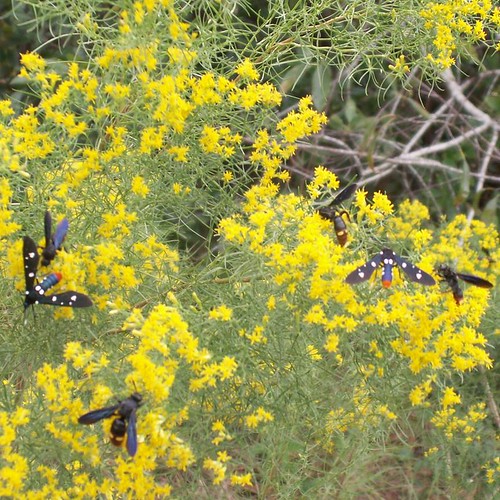
I didn't know if I was watching two species or the males and females of one, and am still trying to identify the less-dazzling creature. I moved in as close as I dared, backing up when it seemed the wind might simply blow them into me, particularly because I'd assumed they were wasps.
Postscript: And one of them is! Thanks go to Matthew Roth and Patrick Coin at Bugguide.Net for identifying the other species as Scolia dubia, commonly known as the digger wasp or blue-winged wasp. It ranges from Massachusetts to Florida, and west to Colorado, Arizona, and California.
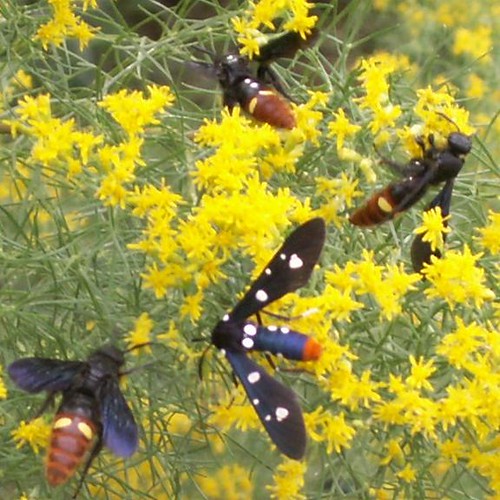
Many citrus fruits on the trees remain green but others have been ripening. I am used to seeing fallen oranges and grapefruit on the surrounding ground, but sometimes a ripened fruit levitates instead. (This photo is as-is out of the camera except for cropping.)
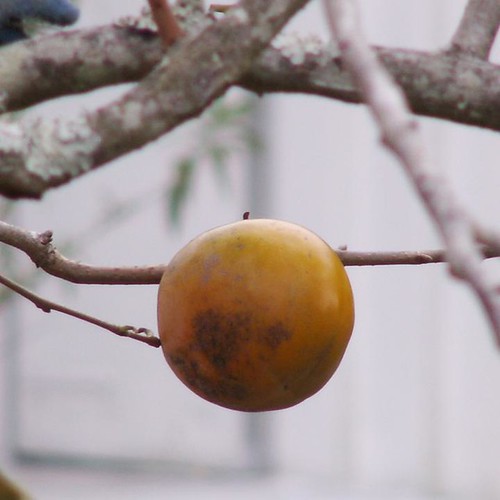
A turtle dove sat vigil on a wire by the church as clouds gathered. I photographed it first from across the street and then moved closer. One of the first things that struck me when we moved here was the absence of rock doves (a.k.a. pigeons).
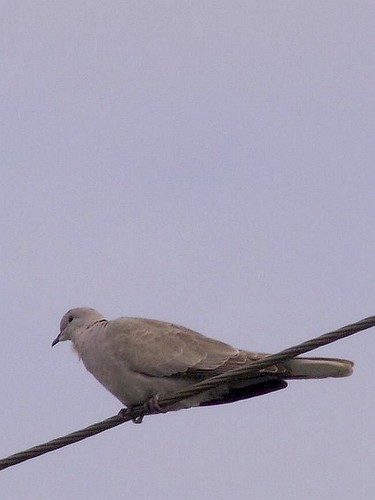
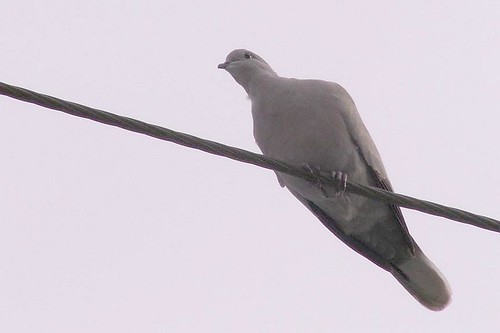
Another bird fared worse, a sparrow perhaps. It had been dead on the road long enough to have been reduced to feathers and bones.

The leaves this far south do not become fiery, but colors still change as more and more plants go to seed. I saw these as I headed to the market.
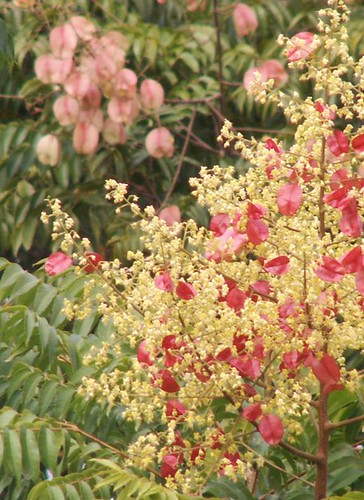
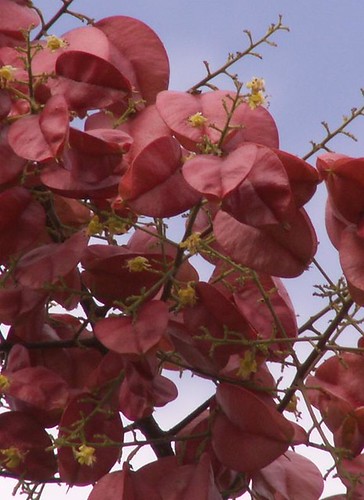
By the time I emerged with packages in hand the sky had darkened considerably. Whenever I see sunbeams like this I think of Cecil B. deMille's Biblical epics. When I was ten I called the arrangement "God clouds," not out of religious fervor but because Hollywood did them so well.
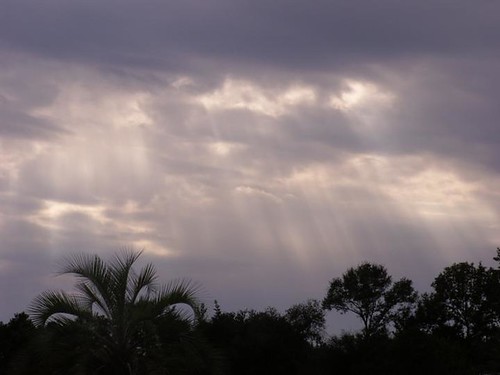
Four trees stand at the edge of a retention pond down the block and around the corner from home. After they have dropped their leaves, these yellow berries remain.
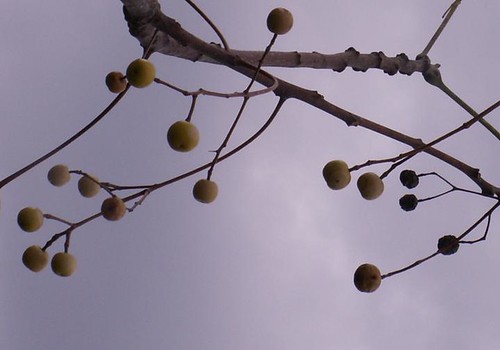











1 Comments:
A wonderful, homey, cosy, friendly journey to go with you on...! Beautiful photos.
Post a Comment
<< Home